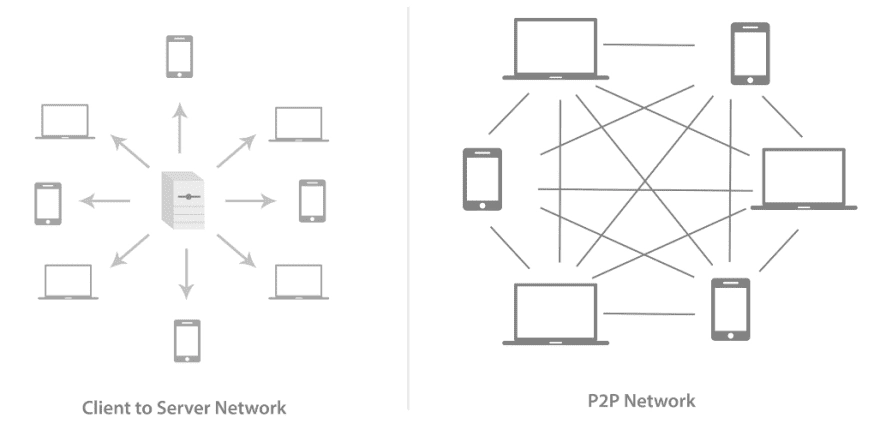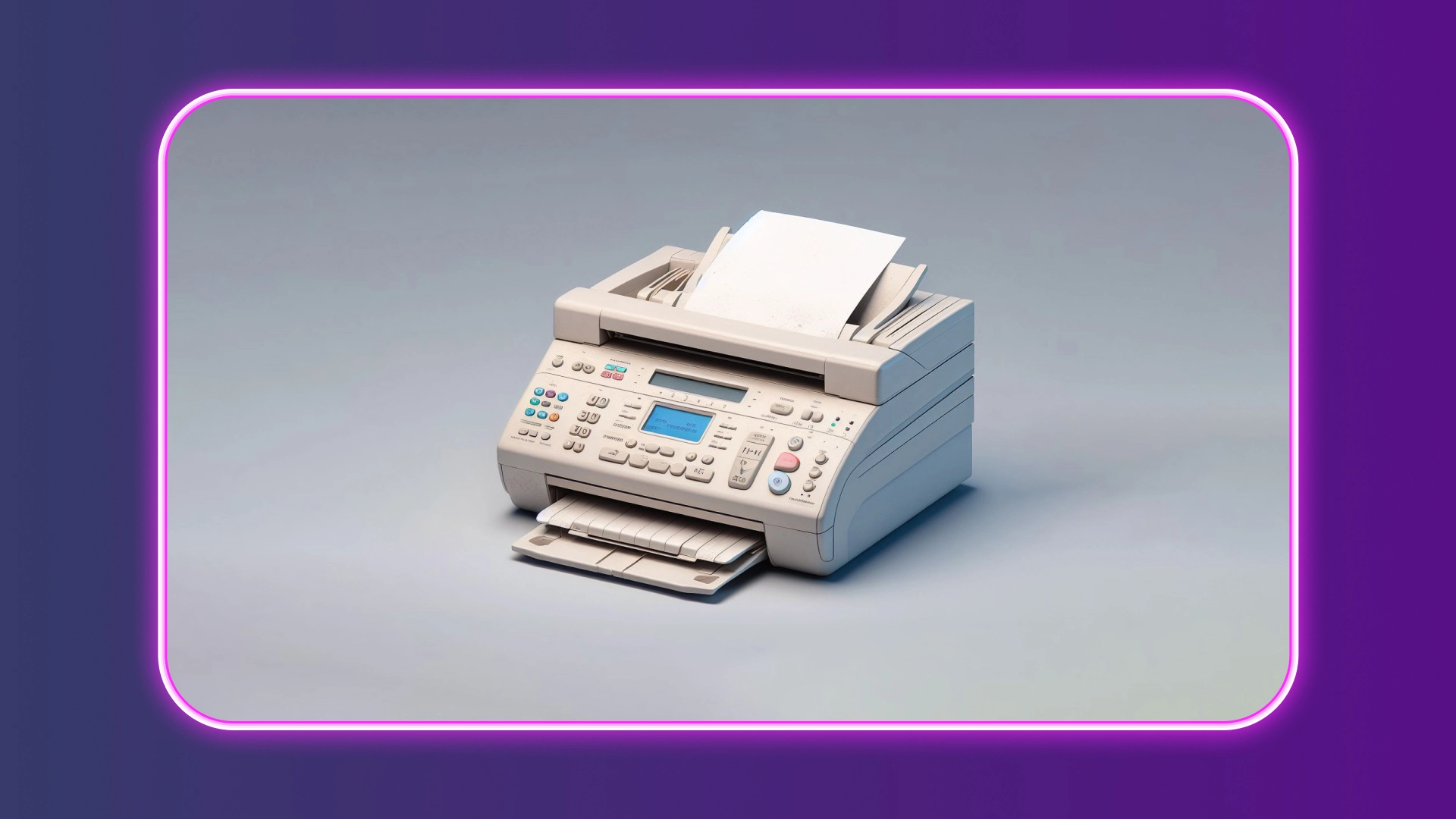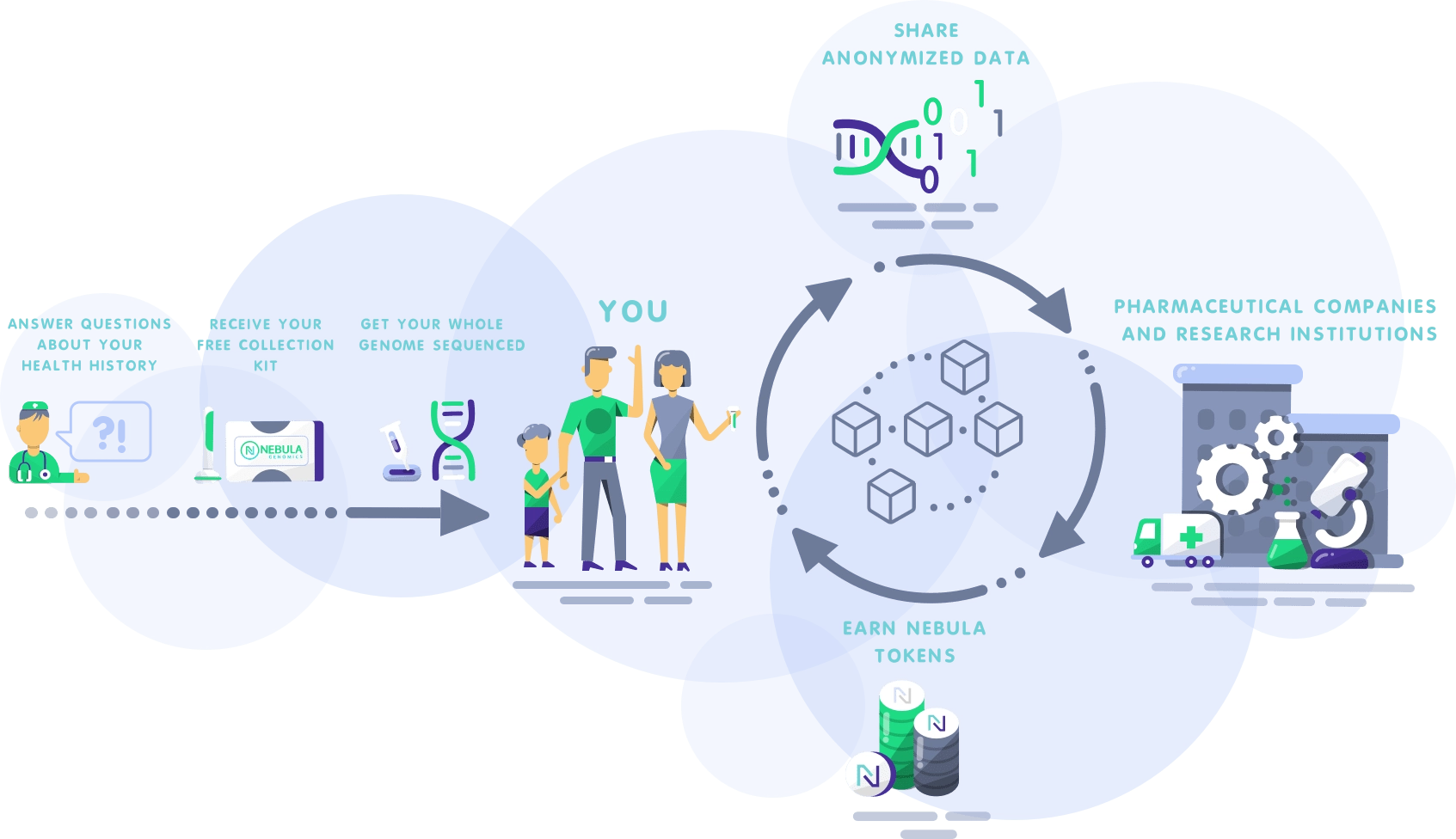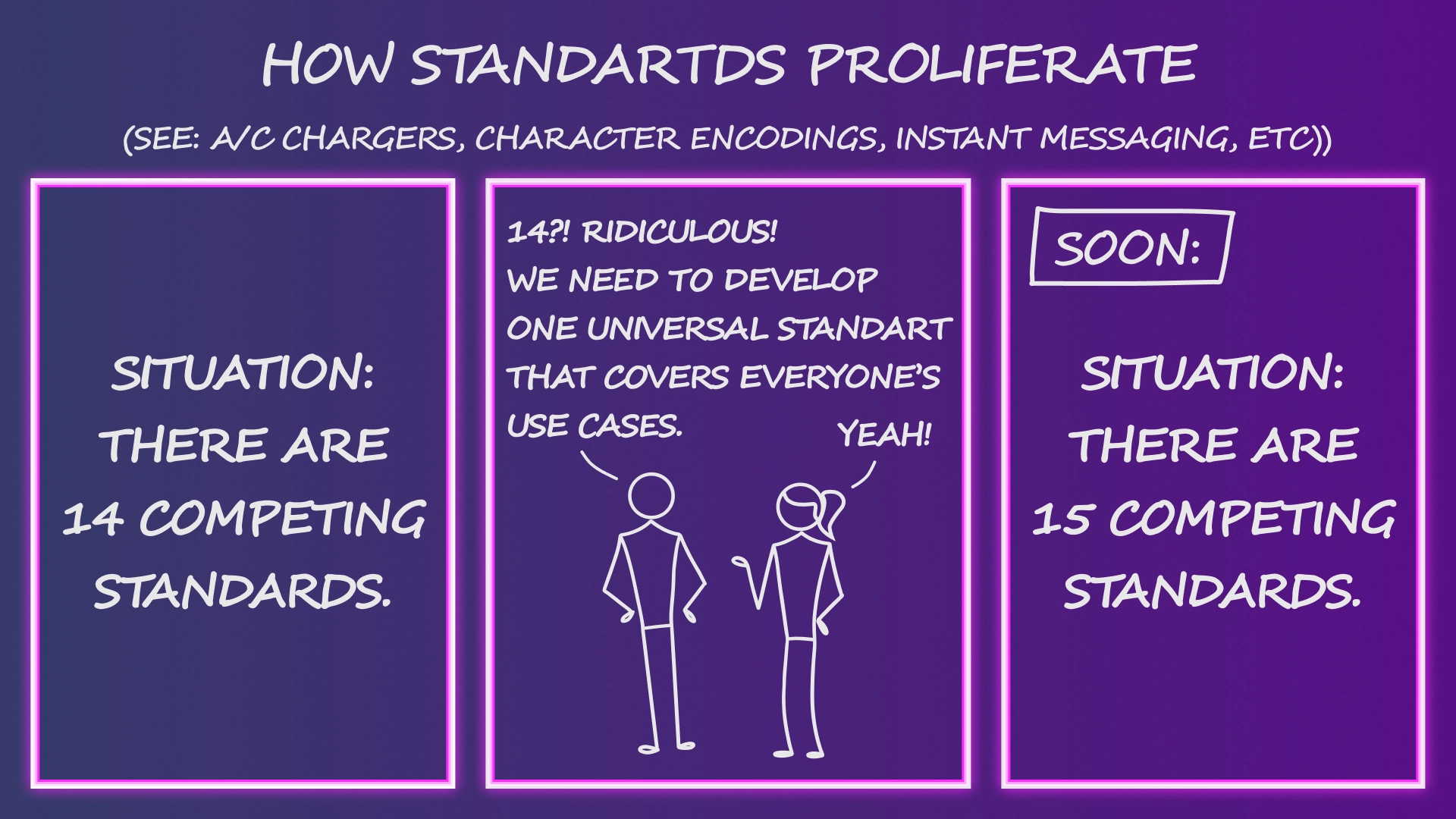

Blockchain in healthcare: Three use-cases
- Blockchain explained: P2P network as “one version of the truth.”
- Automated supply chain monitoring and control: MediLedger and Chronicled
- Open, fast, and secure access to health data: Patientory & Nebula Genomics
- Claim management and Change Healthcare’s Intelligent Healthcare Network
- Blockchain-based pills that are hard to swallow
- Conclusion - blockchain in healthcare
Last year, CB Insights figured that blockchain technology can solve the toughest healthcare challenges, and while the industry executives were (and are) really optimistic about technology's advantages, many of them are hesitant to adopt it. The transition is both rather expensive and requires high-level changes in the business approach to doing healthcare — we’ve covered it in our article on medical big data analytics.
Some of them, though, are willing to adopt the technology: blockchain can really kill a lot of struggles on healthcare’s way to being a service industry with the best possible patient care. Let's take a look on how they are doing it.
Blockchain explained: P2P network as “one version of the truth.”
"Imagine - an industry-wide network owned by the industry itself, connecting you to all your suppliers and customers."
MediLedger
Healthcare business is complicated, so let’s start with something simpler: blockchain.
It's a peer-to-peer network. In our complicated and digitally disrupted lives, we use a lot of networks. There are two main types of network: peer-to-peer and client-server. Client-server is where the intermediary (server) exist.
Your search queries to Google and Yahoo are processed on their server and then returned to you by the relevance. That’s, very simplified, is how most of the Internet-2019 works.
Blockchain is another story. Let’s say you want to get your lab results from your medical records stored in the blockchain-enhanced network. In that network, your medical records are collected from every participant of your interactions with the industry: doctors, hospitals, insurers, labs, pharmacies, and possibly even from research institutions. All of the participants are called peers, and they transfer data between each other, without intermediaries. So it’s a peer-to-peer network.

It's distributed & decentralized network. The place data is stored in is called “digital ledger.” But let’s say it’s a box. There’s only your data in that box, and only you have unlimited access to it through your cryptographic key (or hash).
The participant of the medical care process can, on other hand, add data to the box: for instance, if you get a new prescription and a clinician needs to add it to your medical history. Or, they can see your data — for instance, if you want to buy meds and a pharm provider wants to check if you’ve actually been prescribed with them.
So blockchain is distributed (a lot of people can have access to data from different devices) and decentralized (there’s no “main” element in the network which is responsible for its performance and safety.)
It's secured. As the medical blockchain networks are usually private or federated, you need to authorize another person’s access to your data by yourself. (In public blockchain networks, though, all users are anonymous, and authorisation isn’t needed.)
Also, this ledger or a “box”, in our case, has a very good memory. If you've put a lab test there, and then some crazy scientist stole it from you, a part of the box where a lab test was will not be empty. First of all, your lab test will be there, because data in blockchain cannot be modified or deleted. Second of all, it will consist of a transaction — in blockchain everything you (or anyone) do with data is a transaction — of removing your lab test.
Even if the network with the database will be hacked, your data won’t be compromised: it’s encrypted in cryptographic key, a small part of the box.

Fast. What’s really important to understand is that blockchain is not a product or a feature or a data storage, like Dropbox, just a bit more complex, no. The blockchain is a distributed database, a network.
Being integrated into the healthcare’s software it doesn’t start storing everything that was found in every EHR you’ve been in contact with. No, it provides you with access to it: to every database that is referenced to a system.
Automated supply chain monitoring and control: MediLedger and Chronicled
Patients and people who just buy meds rarely can identify where these meds came from. Surely, they can ask for a certificate, but no one prevents suppliers from faking it — and customers are often aren't able to quickly verify it. Blockchain is a secure place for information about meds that "follows" them through the whole supply chain: from the manufacturer to the pharmacy. To get access to the data stored in blockchain one has to scan barcodes on medical packages through Chronicled app. Information in there cannot be changed or deleted and, therefore, no one can forge it.
MediLedger launched Chronicled in 2017. This platform provides healthcare supply chain with an interoperable technology, that connects pharma manufacturers and pharma distributors through a decentralized customized system that operates on the basis of a digital ledger. Chronicled covers track and trace regulations and is aimed at the overall improvement of the healthcare supply chain functioning and business operation. It also uses an EPCIS, a safety protocol that accelerates transactions in the system and secures the process itself.

The Mediledger is very ambitious, though, considering the fact its owners claim that they will solve the problem of a single electronic system for american pharma, which is not created just yet. They say it will control all healthcare production chains in America in 2023 — just as DSCSA which will come into force at this time demands.
Open, fast, and secure access to health data: Patientory & Nebula Genomics
Another case that unlocks the opportunities of interoperability becomes, through blockchain technology, an option to secure electronic health records (EHR) systems, streamline the access to them, and to give patients with more control of their health information.
To fully get the importance of fast access to a comprehensive, usable and robust EHR system, consider this: more than a half of patient with lung cancer are diagnosed with it after cancer "claims" other organs, so the treatment options as surgery and chemo give almost zero effect. Early detection can improve the possibility of recovery, but the first signs of cancer on CT are often dismissed as “an incidental finding” or defined as the symptoms of other disease. So early detection isn’t happening. To solve the issue, Permanente Medical Group (PMG) came up with an idea to mark all suspicious CT exams with a trackable identifying marker. Thus, doctors can extract a report on imaging tests and med history of a patient with a click and provide a patient with a follow-up treatment or recommendations about it, if needed. All due to understandable labeling and quick access to it.
Many death could be prevented annually if Americans could access easy-to-use and quick EHRs, but most EHRs are exist in the state of opposite to “easy-to-use”. But no, the majority of health data is transmitted in healthcare through a fax machine. Fax.

Patientory was launched in 2018. It's is a private blockchain platform that allows users to access and manage their health records online. In this system, a patient can create some kind of digital briefcase, accessible from mobile devices, that stores their life-long health information from different providers and facilities and share it with doctors and relatives. Clinicians, on other hand, can use Patientory for scheduling, for online orders and referring. Patientory is a free app. 10 MB of storage are also free, and the rest of its users can buy with a company's own cryptocurrency — PTOY. Its system is integrated with major EMRs such as Meditech, Epic, Center, etc., and converts their data to a nicely-looking, insightful and consistent dashboard.

Nebula Genomics, another blockchain-based company and a marketplace, provides people with an opportunity to discover ancestry secrets of their DNA and start, yes, to make money by giving out these data to researchers. Blockchain technology encrypts customer data with multiple keys and, if shared with pharma companies or research organizations, their data is anonymized and summarized. In other words, no one actually see the raw data except a person who ordered a genomic sequence. Nebula also reduced the risk of data breaches by forbidding the buyers to analyze data from people’s DNA with machines that are not Nebula’s computers.
Claim management and Change Healthcare’s Intelligent Healthcare Network
Let’s imagine an unpleasant place where you have chronic tonsillitis, and you’re giving up on non-invasive methods of treatment and plan to yield to tonsillectomy.
The secretary or assistant of your ENT specialist and surgeon with all the siloed documents from all the healthcare providers from your past, get an authoritative “yes” to the procedure from your insurer, and finally, send a claim.
After tonsillectomy, clinicians who interact with you on recovery and possible complications have to get info about the surgery from the ENT specialist, your medical history from your primary doctor, and call every doctor in the healthcare you’ve interacted with.
The more links exist in the system, the more failures might occur.
Solutions that are integrated into claim management are generally are aimed at preventing and quick killing of claim frauds and at maintaining transparency and visibility of payers’ data. Also, they make the process less tedious.
Blockchain technology is able to unite different software and apps, used by different participants of the claim processing, by giving them access to a ledger where the needed information can be stored. A privacy concern, on the other hand, will be addressed through blockchain technology by showing to different participants of the process the information that is needed specifically by them. Thus, trust and privacy.
So in healthcare, claim management blockchain solution will act like that: it will give providers and insurers encrypted info on patient health that is relevant to them while protecting patients’ privacy. A blockchain-based, synchronized repository of medical records will keep a cryptographic signature for each record in a ledger. Such signature will mark and define what are the contains of a record without actually storing them in the blockchain. Maybe, a link analogy will be good there: ledger will be a “link” between a party that wants to request info and a party that stores it, but this link will contain encrypted signature of its destination — and if there’s no “agreement” between both of the party, the path to the destination will not be open.
Last year, the first scaled solution for claim management in healthcare appeared. Change Healthcare (CH), Emdeon in the past, the largest health administrative network in America released its Intelligent Healthcare Network (IHN). It is a cloud-based platform that utilizes the functionality of blockchain and an API (application program interface) that was created in collaboration with Amazon Web Services (AWS).
Today, IHN processed nearly 14 billion transactions and approximately $1 trillion in adjudicated claims. Being based on the blockchain, IHN improves claim management accuracy by validating and normalizing data, submitted by providers. It also accelerates the process of claim adjudication, optimizing a claim’s routes and aggregating clinical and financial data.
Change Healthcare recently collaborated with TIBCO and its Project Dovetail to introduce smart contracts and automate transactions-related events in healthcare and improve the look of clinicians’ revenue cycle. Dovetail will build a platform where payers and insurers will be able to create these smart contracts covering healthcare transactions.
Smart contract is a computer protocol that can facilitate transaction between two parties without an intermediary and verify terms and requirements, associated with it. For instance, if you want to buy a cake through smart contract, you will get it only after the protocol will see that you’ve transferred the money for purchase (requirement #1, verified); at the same time, a seller will get your money only after the cake will be delivered to you, safe and sound (requirement #2, verified).
Smart contracts will give providers the standardized approach to claim management and will be suited to run on any blockchain-based platform. Thus, people will “visualize, test, audit, and implement smart contracts for automating healthcare transaction processes” all by themselves, says Aaron Symanski, CH’s CTO.
Blockchain-based pills that are hard to swallow
By 2021, the blockchain technology market will grow to $2.3 billion, according to Statista. IBM report optimistically suggests that 56% of healthcare institutions will adopt it by 2020. But these numbers are very dependable on healthcare providers. Data integrity, quick access to data, fewer frauds and more patient satisfaction are surely good things, and there’s a lot of real-life use cases that have already proven blockchain’s value, but…
Interoperability and scaling. Being a network and ad distributed database, blockchain technology cannot be a solution that solves healthcare challenges by itself. In a high-functioning and valuable system of accessible medical data, blockchain is just a part of the larger picture. To combine all healthcare data, all interested parties will need to cooperate. Including direct competitors. Otherwise, there will be no point and no real accessibility to the health information.
And, the question of scaling. If we assume there will be a blockchain-based ecosystem for the healthcare, it will combine a private blockchain sector (for data owners) and a public blockchain sector (for communication among private ones). For now public blockchain networks are rather slow to cover communication in whole healthcare industry — but we think further developments will get us there.

Plus, healthcare providers will have to spend money to train their staff on how to work with new solutions. Which are a cost.
Laws and regulations. Even though traditional data exchange system, installed in healthcare organizations, remind us about the Inquisition, they meet healthcare regulations and standards. HIPAA regulations, for instance, give blockchain-based technologies a hard time due to its distributed nature.To be compliant, a technology vendor must validate and test every piece of their software. Some blockchain solutions (like the already mentioned MediLedger) have already answered that issue — others are yet to overcome it.
Additionally, there is General Data Protection Rule (GDPR). From one point of view, blockchain is decentralized system and, being a basis for applications that allows end users to access their data anytime, it seems like a new best friend for GDPR.
From other point of view, blockchain’s cryptographic signature (which is called hash, by the way) that is stored in “ledger” isn’t data. It’s a pointer to data, a link to it. In this case, there is a conflict between a technology and GDPR as the latter dictates the immediate access to one’s data at any time, full control over it and all that. However, no one actually can get the access to one’s data without that signature. So, there’s a place for discussion and for contemplation.
Incentives, more likely — money. And, to the cost. There’s little pleasure to talk about need to invest money in something to become better if you think you have no money. Healthcare is the industry that is very hesitant to spend its money. We’re not talking about progressive hospitals that partner with large technology vendors because they can and because they are determined to shift to value-based care and become a part of a true service industry. We’re talking about small regional clinics and hospitals, about organizations that are not willing to risk what they already have to become something more.
Think about it: Healthcare providers get 20% of claim cost as a profit. Of course, in such a situation, you’d like to continue increasing cost of services and ignoring claims that are filled wrong. To create blockchain-enhanced ecosystem, stakeholders will have to collaborate and it’s a major question how the incentive system (instead of 20%) will work to make them happy.
Additionally, the cost of adoption is rather vague. Blockchain is a very promising technology in long-term and data exchange system that is based on it will be, eventually, cost effective, in comparison to traditional one, but. Overall cost of adoption is still, in short-term, vague, and, most likely, rather high.
Conclusion - blockchain in healthcare
The potential of the blockchain technology is amazing and it’s nice to see that even knowing all above-mentioned pains, more and more healthcare players are willing to try it. Last two years were rather prominent for the application of the technology in the healthcare software development: above-mentioned cases even don’t begin to cover it.
Blockchain was used for the solutions of consent management, imaging data management (Medical Diagnostic Web & Biftury & Longenesis), clinic research on the basis of real-world data (Gustave Roussy Institute & Embleema), for telemedicine — hell, even for healthcare transport! Latter covered rides to a clinic (Lyft & Solve.Care).
Thus, there’s a very high possibility — and Jim Tate, founder of EMR Advocate and Elysian Blockchain agreed with us on that matter at this year’s HIMSS — that 2019 will be all about “real-world [blockchain] cases coming to bear.”
Let’s agree that it’s huge and exciting, and be hopeful healthcare providers will try to utilize all these feelings.
Tell us about your project
Fill out the form or contact us

Tell us about your project
Thank you
Your submission is received and we will contact you soon
Follow us
